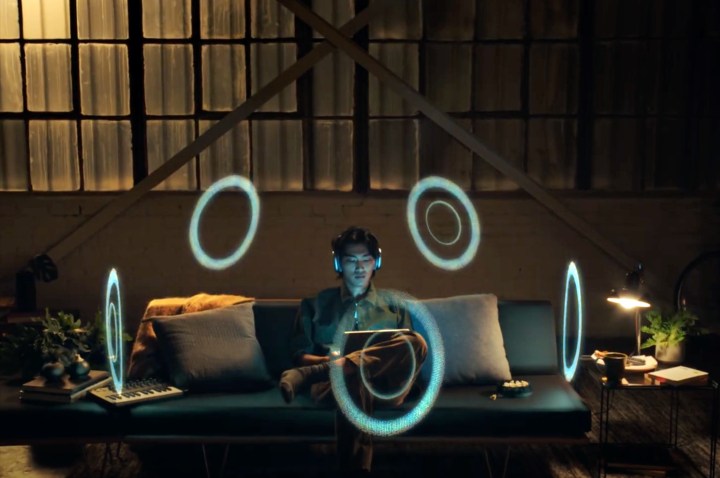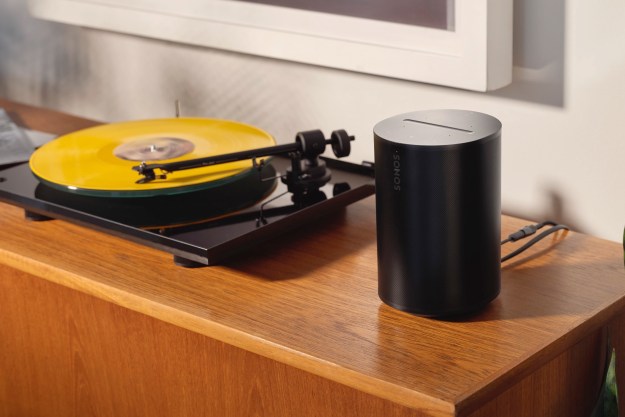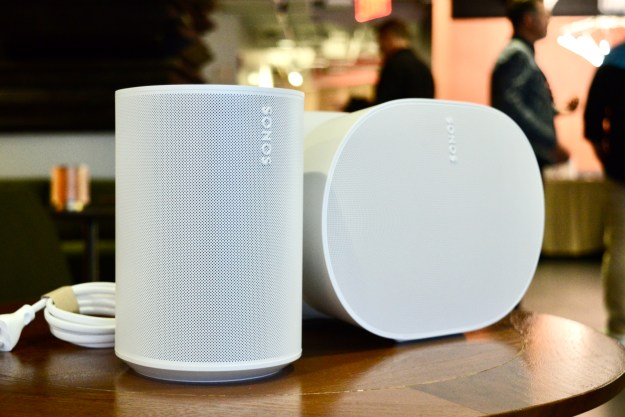With the release of the tvOS 15 beta last week, we finally got our first taste of what Apple’s spatial audio sounds like when you combine an Apple TV 4K with a big-screen TV and the head-tracking built into the company’s AirPods Max or AirPods Pro. The result? A virtual home theater experience that will put a 65-inch smile on your face.
Apple launched spatial audio on the AirPods Pro in 2020. At the time, it made use of head-tracking technology to create a highly convincing 3D effect that turned your iPhone or iPad’s screen into a virtual movie theater. If you held your iPhone in front of you and moved your head from side to side, dialogue and other key soundtrack elements stayed pinned to the iPhone’s location. Turning your head to the right meant that these sounds seemed to still be coming from your phone.

With the release of tvOS 15, that same trick now works on an Apple TV 4K, on the biggest screen in the house. Does Apple’s virtual surround sound effect work as well when watching a 55-inch or larger screen? In a word: Yes.
Using a set of AirPods Max (it also works with AirPods Pro) and a second-gen Apple TV 4K, I fired up a variety of movies on Apple TV+, Disney+, Amazon Prime Video, and Netflix. Apple says the feature will work with Dolby 5.1 but you should get the best experience from Dolby Atmos content. Starting with Avengers: Endgame on Disney+, I was immediately taken by how real
Surround sound in your head
What I mean is that, if you’ve got a 5.1 or better home theater setup, you’re used to hearing sounds coming from the different speakers — that’s what makes surround sound what it is. Head-tracking
But it’s not just sound direction that gets preserved;
When using an Apple TV
Not a perfect substitute
It’s not a perfect substitute for conventional speakers. It’s hard to replicate the feel-it-in-your-chest bass of a subwoofer, and Dolby Atmos height channel sounds (the classic helicopter flying overhead effect) aren’t quite as thrilling. But on the other hand, dialogue is easier to understand and you get to benefit from Apple’s outstanding active noise cancellation on the
If you live in a condo with thin walls, or you like to do most of your movie watching when the rest of the house is asleep, I can’t recommend
At the moment, head-tracking
- Apple TV 4K (gen 1 or gen 2)
- tvOS 15 beta or higher
- AirPods Pro or AirPods Max
- Dolby 5.1 or Dolby Atmos content from:
- Apple TV+
- Disney+
- Amazon Prime Video
What about Netflix?
Netflix will also likely benefit from
Wondering about Dolby Atmos Music from Apple Music? Apple has said it plans to add head-tracking
Editors' Recommendations
- Bluetooth on Sonos’ new Era speakers isn’t what you think – it’s better
- What is Dolby Vision? The dynamic HDR format fully explained
- How to know if you’re actually getting Dolby Atmos sound
- The best speaker brands of 2023: JBL, Sonos, KEF, and more
- Sonos CEO on Bluetooth epiphany: ‘you have to be humble enough to listen to customers’




